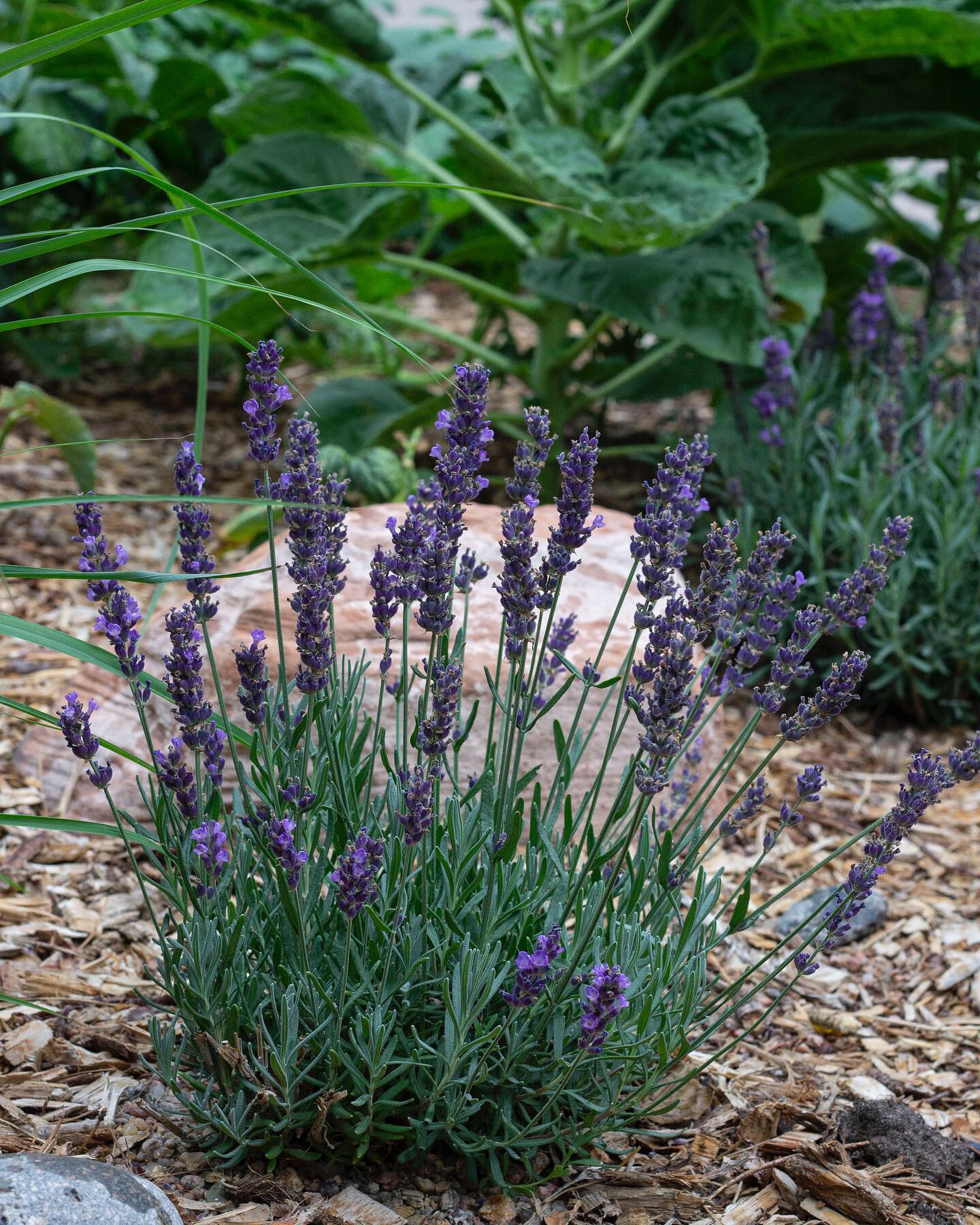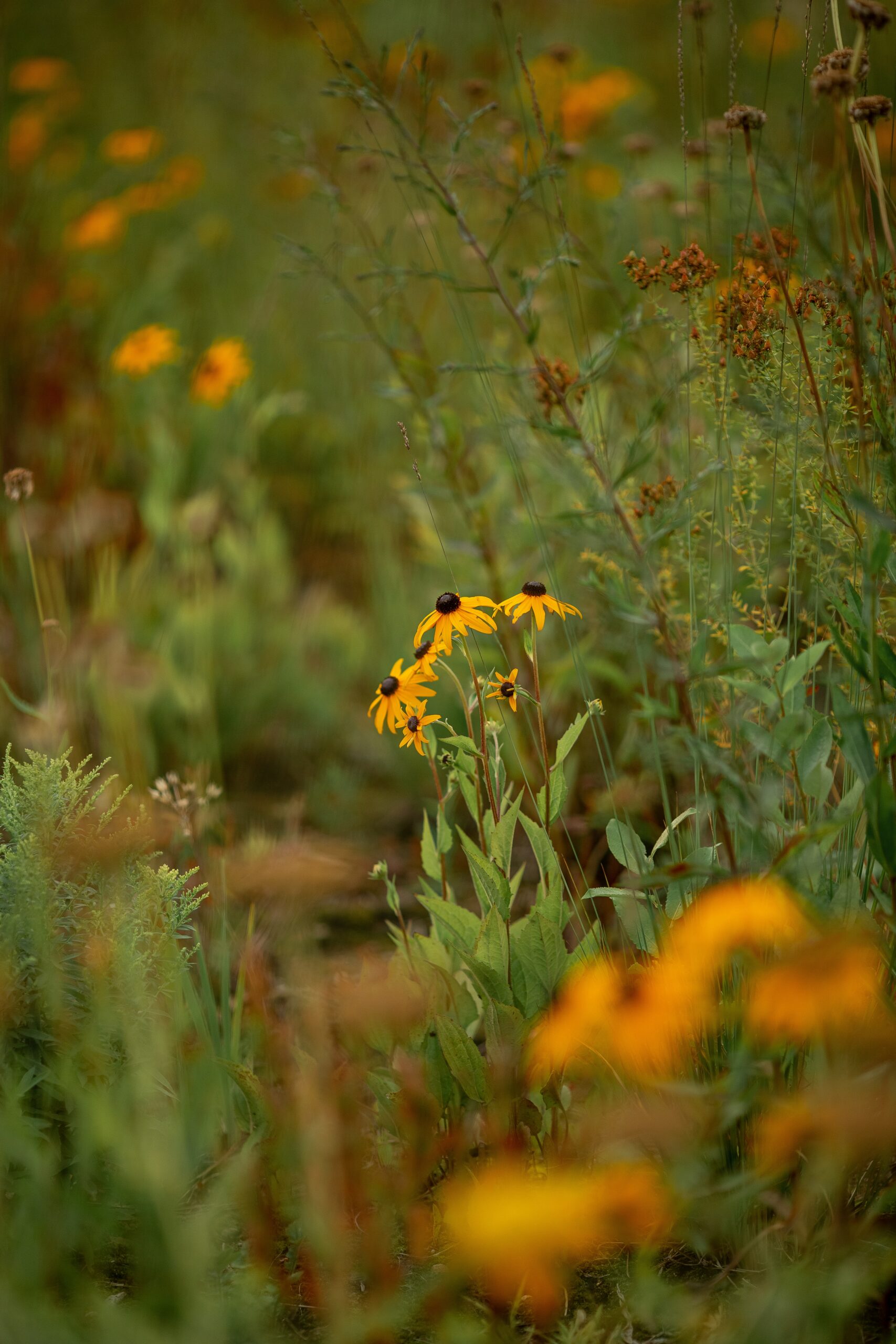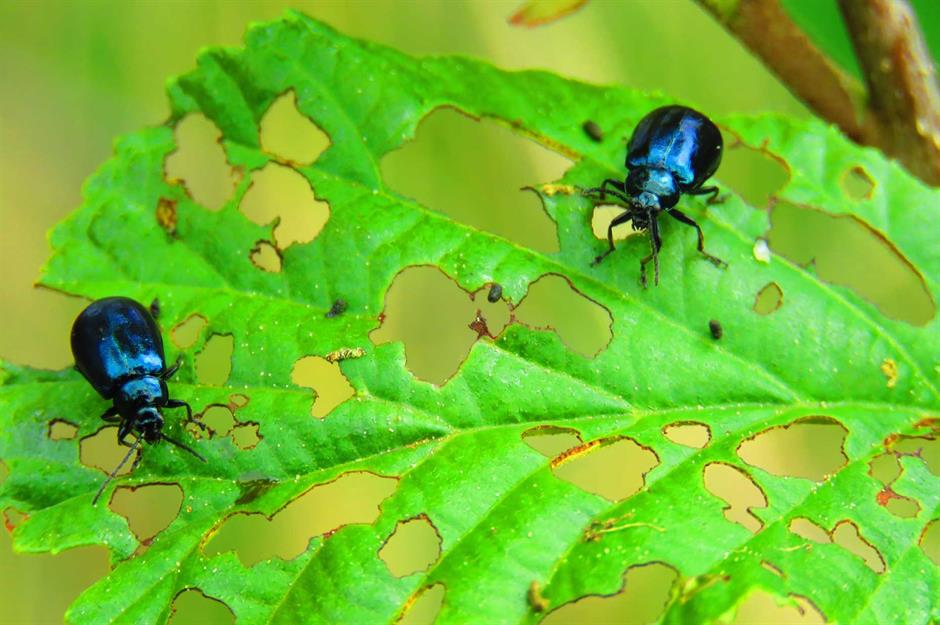Integrated pest management (IPM), encourages regular monitoring of insect populations to determine when and if treatments are necessary to minimize unacceptable levels of damage. It employs the use of physical barriers, companion planting and cultural techniques, in addition to least toxic controls to maintain a proper balance between pest and predator insect. In IPM, total eradication of pest populations is not sought, since it would upset the ecological balance.
The individual needs to determine how much pest-related damage can be tolerated (the injury or damage level) without harming the health of plants or people is more important. Following this, the pest population must be studied to assess how rapidly it will increase to produce that level of damage. The final step involves development of a treatment strategy that will keep the pest population small enough so that it does not cause an unacceptable level of damage.
Companion Planting
As part of a well managed IPM system, strategies employing intercropping and companion planting are utilized to increase crop diversity. In this system, many different herbs, flowers and even weedy ground covers are used to deter pest insects and attract beneficial predators. Insects locate their preferred food by means of sight, smell and taste. They use sensitive receptors on their feet and mouthparts to find a certain crop from a great distance (e.g. the white cabbage butterfly can recognize the mustard oils of the broccoli family from a distance of ten miles).
Plants produce substances that either attract or repel insects. These include:
- Attractants: Some examples include mustard oils of the brassica family that attract cabbage butterflies, apple skins attract codling moths and onions produce sulfur and attract the onion maggot.
- Stimulants: These substances encourage feeding and/or egg laying behavior. Bitter chemicals in cucumber and melon skins stimulate feeding by the cucumber beetle.
- Deterrents: These substances inhibit feeding or egg laying. Mustard oils sicken spider mites and Mexican bean beetles.
- Repellants: These substances force insects to move away from a plant. Citronella and catnip sprays repel many insects.


Beneficial Insects to Attract
- Ground beetles and lady beetles
- Attracted by clovers, tansy and yarrow for egg-laying material; eat aphids, slugs and many soft-bodied pests.
- Hover or syrphid flies (also known as flower flies)
- Flat, open flowers such as marigolds or daisies provide areas for egg laying. Larvae control aphids.
- Tachinid flies
- White clover and members of the carrot family (e.g. carrots, parsley, lovage, queen anne’s lace and cilantro) provide sites for egg laying. Adults are parasites of Mexican bean beetles.
- Lacewings
- Increase in numbers when provided with nearby evergreens for shelter. Adults and larvae are fierce predators of soft-bodied pests.
Flowers and Nectar and Pollen for Adult Beneficial Insects
The compositae (daisy) family is attractive to most beneficial insects and includes daisies, goldenrods, black-eyed susans, coreopsis, asters, bachelor buttons and lettuces that have bolted (sent up a seed stalk). Other flowers and herbs that attract beneficial insects include bee balm, yarrow, the carrot family, mints, hyssop and salvia.
Legumes, such as peas or beans, are used as companions to increase nitrogen levels in the soil. White clover can be used in-between corn rows, as well as peanuts. Vetch can be used as nitrogen providing mulch around fruit trees.
Beans: Plant rosemary, marigolds and nasturtiums to repel Mexican bean beetles.
Tomatoes: Good planted with basil (a possible fly repellant) and asparagus.
Broccoli family: Try with dill, mint, sage, onions and southernwood to repel cabbage butterflies.
Chamomile: Good hosts for hoverflies and wasps.
Cucumbers: Plant with marigolds and onions.
Peas: Plant with shade lovers such as spinach and lettuce.
Carrots: Plant with peas, leeks and onions.
Garlic sprays: Combine with hot peppers and onions (blenderized) for aphid control.
Catnip sprays: Try this for control of aphids and flea beetles.
Copper strips: To repel slugs. Also, try fermented yeast traps to attract and down them. Non-alcoholic Kingsbury Malt beverage was the brew of choice (or non-choice) that provided good slug control. Pull mulch away from transplants if the weather is rainy and slugs are congregating there.

Specific Organic Remedies (Insects and Diseases)
| Pest/Disease | Crop | Remedy |
| Aphids | All crops | Wash off with a strong spray of water, insecticidal soap. |
| Corn Earworm | Corn | Use a few drops of mineral oil in the tips of baby corn ears or dust with Diatomaceous earth. |
| Cut Worms | All young transplants | Protect stems with a ‘collar’ made of toilet paper cores. Utilize Diatomaceous earth on the soil around transplants. |
| Earwigs | All crops | Shallow containers of beer as traps. |
| Flea Beetles | All young transplants | Garden row-covers, such as Reemay, Safer Insecticidal Soap, Neem oil, Diatomaceous earth, beneficial nematodes (use the last product for juvenile forms of flea beetles that live in the soil), available as Scanmask from Planet Natural |
| Mexican Bean Beetle | Beans (all types except soybeans) | For adult beetles: Pyganic, an organic botanical product derived from chrysanthemums. For larvae: Neem oil. Both products are available at Arbico Organics |
| White Cabbage Butterfly (Cabbage Worm) | Crucifer family: Broccoli, cabbage, cauliflower, turnips, Brussels sprouts, Chinese cabbage, kale | Brush off eggs that are mainly laid on the underside of leaves and also brush off the larval caterpillar form of the pest. Bacillus thuringiensis kurstaki (sold as: Thuricide or Dipel), which must be ingested by the caterpillars, so it is important to spray on the underneath leaf surfaces. Neem oil (available locally) can be used as a foliar spray. |
| White Grubs | All transplants and seeded crops | Eat germinating seeds and young roots. Use ‘Scanmask’ from Planet Natural. |
| Blights (spots, brown, yellowing leaves) | Mostly tomatoes | Pick off yellowing leaves, water at the roots. Use Serenade, available at Planet Natural. |
| Powdery Mildew | Summer and winter squash, cucumbers, pumpkins and melons | Water plants at the roots and discard severely infected leaves. Spray leaves with a solution of: 1 Tbsp. baking soda, 2 drops dishwashing liquid or Safer’s Insecticidal Soap, 1 Tbsp. horticultural oil such as ‘Sunspray R’, mixed in 1 gallon of water. |
Sources: Carr, Anne. Rodale’s Color Handbook of Garden Insects. Rodale, 1979.
Cranshaw, Whitney. Garden Insects of North America: The Ultimate Guide to Backyard Bugs. Princeton, NJ: Princeton University Press, 2004.
Cunningham, Sally Jean. Great Garden Companions: A Companion-Planting System for a Beautiful, Chemical-Free Vegetable Garden. Rodale, 2000.
Riotte, Louise. Carrots Love Tomatoes: Secrets of Companion Planting for Successful Gardening. 2nd Ed. Storey Publishing, 1998.




